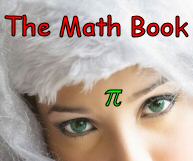Monday, April 30, 2007
Mathematical landscape

196883 dimensions: The Monster group is the largest sporadic simple group and this is the smallest number of dimensions it acts in. It is the largest finite sporadic group. The monster group is linked with continuous objects like the J-invariant and modular forms by the Monstrous moonshine conjecture. It is conjectured to be the symmetry group of the constraint polynomial in invariance mechanics.
256 dimensions: The number of dimensions (excluding space and time) to represent all the degrees of freedom from supergravity (128 bosons + 128 fermions), which is the same as the lowest order of superstring theory. This article is licensed under the GNU Free Documentation License. It uses material from the Wikipedia article "Mathematical landscape". This entry is a fragment of a larger work. Link may die if entry is finally removed or merged.
 The Wikipedia Knowledge Dump (WikiDumper.org)
The Wikipedia Knowledge Dump (WikiDumper.org)

